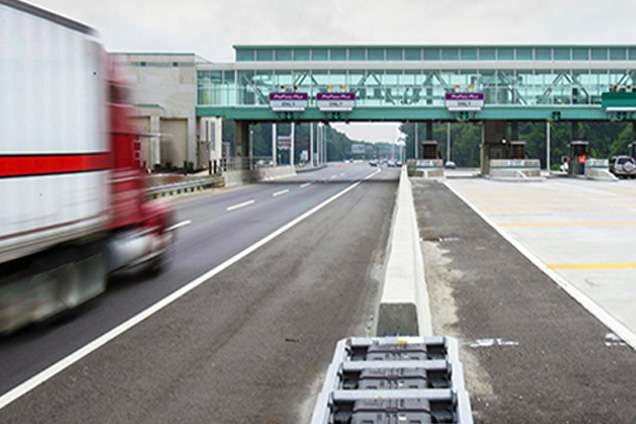Time to Rethink Truck Tolling by Plate

Motor carriers and professional truck drivers find operating trucks on toll roads a lot easier these days. Toll facilities are rapidly eliminating toll tickets and staffed toll booths and moving to all-electronic-tolling (AET), allowing uninterrupted travel at highway speeds through “open road tolling.”
The AET adopted by toll roads comes in two versions. One is toll by plate, which uses images of license plates on trucks and trailers to identify users. The other is toll by transponder, which uses a small, battery-powered device that transmits a radio signal to toll authorities. Both reduce the delays and hassle of toll tickets and toll booths. However, toll by plate and toll by transponder accomplish collecting tolls very differently. And those differences affect your bottom line as a toll road user.
Toll by plate relies on cameras and videos. Poor weather and lighting conditions cause issues when capturing images of license plate numbers so they can be properly matched to registered vehicle owners. Errors and delays in toll billing are common occurrences in toll by plate systems.
These errors and delays can have a bottom line impact on motor carriers. Toll roads mail printed toll by plate invoices to their customers, with a “due by” date attached. Miss the due by date and additional fees and fines are triggered. But for motor carriers, finding and challenging toll charge discrepancies in paper invoices from multiple toll facilities is time-consuming and difficult. With toll by transponder, toll charges on all toll facilities can be consolidated into a single monthly bill, and a carrier’s toll activity can be monitored online.
Toll by plate also adds costs to the business of running a toll road. Just as toll roads jettisoned manned toll booths due to their high cost, toll roads now face the toll by plate labor costs of manually matching blurry camera images to vehicle registration records. Toll by plate transactions are over three times as costly to the toll road as toll by transponder transactions. And those higher costs are passed on to toll road users.
And the toll by plate costs don’t end there. Toll by plate charges are frequently uncollectible – fully six times more than toll by transponder charges. Higher business costs and less recovery means toll facilities will levy significantly higher charges for toll by plate transactions.
As one toll authority states on its website: “Video Tolls [their version of toll by plate] rates are 1.5 times the base toll rates…. Video Toll rates are the highest rates to offset the higher cost of processing Video Tolls.”
By comparison, toll by transponder costs less because it uses technology that is unaffected by weather, customer identification problems and does not require manual labor.
Learn more about your electronic tolling choices, including real-world rate comparisons between toll by plate and toll by transponder, plus how tolling by transponder can save you money. Read “The Pros and Cons of Truck Tolling by Plate” whitepaper now.
Strategic consultants at work for you.
PrePass® consultants provide industry and technical expertise to boost improvement within your organization. We start by understanding your business operation, goals, objectives, and business challenges. Together, PrePass helps you improve safety, reduce compliance risk, and control operating costs within a single, comprehensive program. This includes weigh station bypass, toll payment management and data insight tools. Learn more at www.prepass.com. Contact PrePass today at prepass.com/contact or by calling (800) 773-7277, option #2.
The above article is sponsor-generated content. To learn more about sponsor-generated content, click here.


